Temperature measurement of several smarthome peripherals
I had an opportunity to borrow a thermal camera thanks to a course at Rennes University. I took time to look on several smarthome peripherals that are available in my house.
I have had all necessary information to do those measurement, so I took care about all aspects to have those correct : measurement on a black tape which have well known emissivity (0,95), direct reflection measurement using aluminium sheet, camera tuning with correct ambient temperature and hygrometry.
Fibaro FGR-221
No, this module is not providing temperature measurement, although it’s consuming power then it is heating. Let’s have a look what’s happening in real life. In my case the module is behind the switch at the bottom :
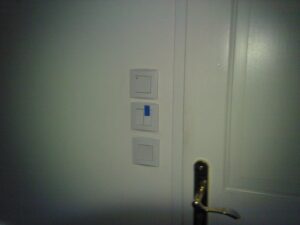 |
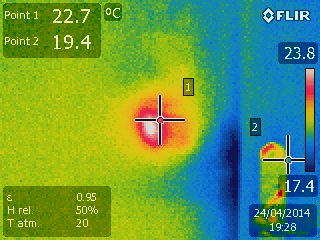 |
We can see clearly temperature increase on the bottom switch due to fibaro module. Increase of the switch is 3°C compared to the others above.
In case of RT2012 house, then using sealed electrical box, this temperature increase should be higher. Hopefully it will remain acceptable …
Oregon Scientific THGR122N probe
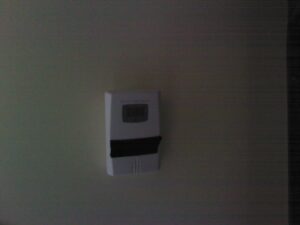 |
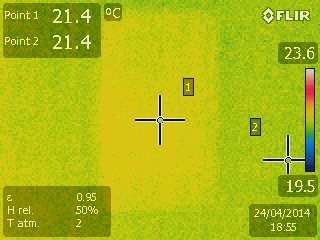 |
Firstly we can see that we have very small temperature difference between environment (the wall) and the probe itself because it drains very low current then have a very low power dissipation. It is very difficult to distingish the probe itself from the wall when using the thermal camera.
All camera calibrations being done, we can measure a temperature of 21,2°C on the probe, the temperature value measured by the probe being 20,9°C. The difference is then very small (0,3°C).
Temperature accuracy for this probe is confirmed by the measure. I have had in the past also check that measurement dispersion is also very limited : having three probe at the same place, they measure exactly the same temperature.
Aeon 4 in 1 multisensor motion detector
The measured temperature on the device is 22,7°C. The value sent by the sensor is 20,9°C. The difference is then important.
Such a big difference can’t be explained by a bad design or system calibration. A temperature measurement using a CTN is easy to design and dispersion is much less important than what we can measure here. I then think this delta has been volontary added in order to compensate the fact that the sensor will be most of time fitted on the roof, although the ambient temperature measurement should be done at 1,5 m from the floor.
However, temperature differences between different heights depends really on the kind of home, insulation, heating system … It is then not recommended to use such sensor to do thermal regulation of a room.
Thermostatic valve StellaZ
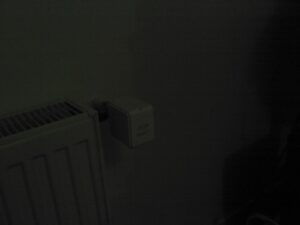 |
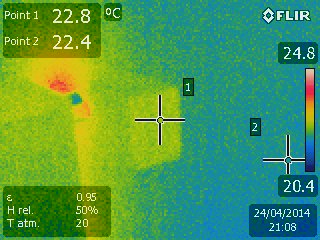 |
|
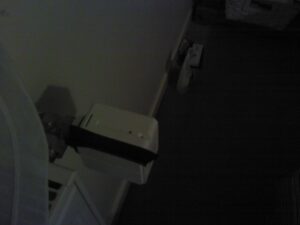 |
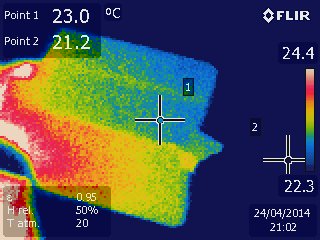 |
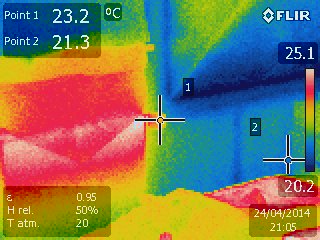 |
Here are the values measured with the thermal camera and the one sent by the devices.
| Measured temp on the valve |
Measured temp on the wall |
Temp sent to controller | |
| Thermostatic valve 1 |
22,9°C | 22,3°C | 22,5°C |
| Thermostatic valve 2 |
22,3°C | 21,5°C | 23,0°C |
Thermal picture show us that the CTN is correctly located at the top front of the valve, because this is the location where temperature is reflecting the most the ambient one when the radiator is heating. The thermal difference between that point and ambient is around 0,5°C.
Surprinsingly the slot in the middle of the top side have some effect on the thermal flow, we can see some temperature difference there. Removing this slot could improve temperature measurement accuracy.
The difference between measured values and sent values is between 0,5°C and 1°C. This is quite relevant with the product specification which provides an accuracy of ±0,5°C. This accuracy is visible also on an eedomus controller, only the values that are multiple of 0,5°C are displayed.


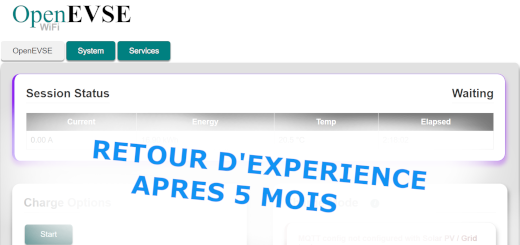
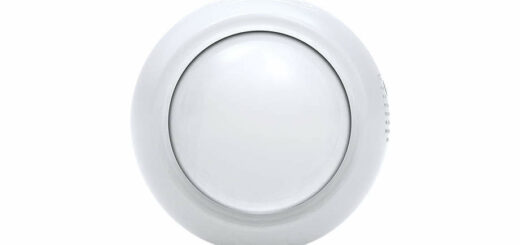
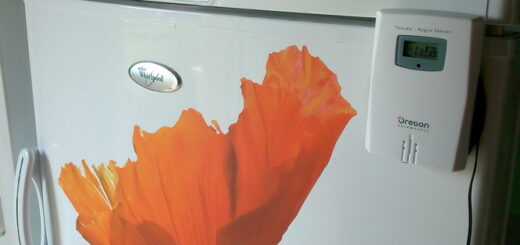
1 Response
[…] température extérieure, j’utilise une sonde oregon scientific qui a une bonne précision (voir cet article). Quand à la température dans les pièces, elles proviennent des têtes thermostatiques […]